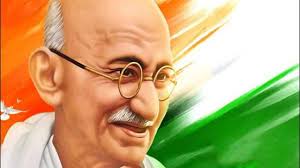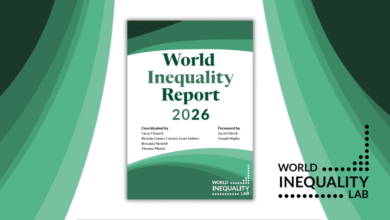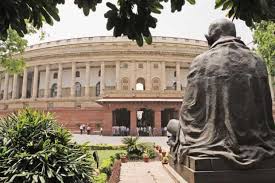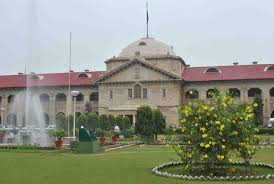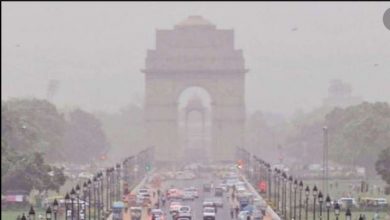Quotable quotes of Gandhi And Their Relevance Today
Mahesh Chandra Dwivedi
Almost entire informed world believes that Mahatma Gandhi was the tallest amongst tall human beings of the past century -and at the time of his death Albert Einstein had spontaneously remarked that ‘Coming generations would hardly be able to believe that such a man with flesh and blood had ever tread this earth.’
Rarely in the annals of human history has anybody harmonized one’s thoughts, words and deeds so audaciously and so unmindfully of one’s loss of prestige and one’s trials and tribulations.
He kept on striving to seek truth during his entire life.
His incisive ability to observe one’s own thoughts and conduct and analyze them fully to draw conclusions was far above that of ordinary mortals.
His innate sense of equality of humankind irrespective of one’s caste, creed, or status was superhuman.
The path of SATYAGRAH, which literally means insistence on truth, coupled with AHIMSA shown by him led not only to Indian independence, but also to similar non-violent successful movements in many parts of the world- better known among them are Martin Luther King (Junior)’s emancipation of blacks from racial discrimination by whites in the U. S. A., Nelson Mandela’s abolition of apartheid in South Africa, etc.
In order to examine the relevance of Gandhi’s thoughts and deeds in today’s India and today’s world some better known quotes of Gandhi are being reproduced below and in the light of these quotes an effort is being made to draw some inferences.
The Cardinal Virtues
“I have known no distinction between relatives and strangers, white and coloured, and Hindus and Indians of other faiths. I can not claim this as a special virtue as it is in my very nature, rather than the result of any effort on my part, whereas in the case of Ahimsa, Brahmcharya, Aparigrah and other cardinal virtues, I am fully conscious of continuous striving for their cultivation… But this much I can say with assurance, as a result of all my experiments, that a perfect vision of Truth can only follow a complete realization of Ahimsa. To see the universal and all pervading spirit of Truth face to face one must be able to love the meanest of the creation as oneslf… A true Brahmchari will not even dream of satisfying the fleshly appetite.” – My Experiments with Truth
The principle of Ahimsa will be dealt with later- and, let us confine ourselves presently to Brahmcahrya (celibacy) and Truth.
Much has been said in the scriptures of many religions and more can be said about the virtues of Brahmcharya.
On the other hand, scientific enquiries and historical facts have many times, depending on the circumstances, proved the contrary to be true.
It has been the experience of some persons that suppression of one’s urge strengthens the urge for expression in other ways and this sometimes leads to great achievements by Brahmcharis (celibates).
But for common humanity the suppression of sexuality is more likely to lead to a state of depression and even criminality.
So far as the utility or otherwise of sexual satisfaction is concerned, none has been able to refute authentically the findings of the scientific enquiries by Dr. Kinsey and others, which clearly establish that for a healthy, happy and normal life satisfaction of sexual appetite is a must.
The consequences of forced celibacy in the Church are known to have resulted in hundreds of thousands of cases of rapes and child abuse within the confines of the churches, some of which even the Pope had to admit publicly.
Moreover, strict adherence to Brahmcharya by one and all is an open prescription for annihilation of human race.
Truth is no doubt a great virtue and the success of western societies in providing a nearly corruption free life at the low and middle level is dependent mainly on the truthful behaviour of general public there.
The respect and trust that Gandhi generated amongst Indians as well as foreigners were a consequence of his speaking and sticking to what was true and right.
But I cannot see how one can stick to truth in diplomatic relations- for during war, even Krishna had to obfuscate the truth of the death of Ashwatthama, the elephant, by drum-beatings.
The Religion
“It is my conviction that all the great faiths of the world are true, are God ordained and that they serve the purpose of God and of those who have been brought up in those surroundings and those faiths.
I do not believe that the time will ever come when we shall be able to say there is only one religion in the world.
In a sense even today there is one fundamental religion in the world.- – Tendulkar–
Mahatma……….
Gandhi had studied in detail most of the great faiths of the world. It is surprising that yet he stated that all religions serve the purpose of God.
His desire that all great faiths should serve the purpose of God is what should be the desire of any great lover of humanity.
However, his statement presupposes that there is one universal God in all religions.
This presumption is not at all acceptable in God-revealed religions like Christianity, Islam or Judaism.
Nobody can be a true Muslim who accepts that a God of any faith other than Islam is also a God worth worshipping.
A student of Christian theology in Oxford University was, during a discussion with me, insisting that no soul can be salvaged without surrendering oneself before the Christ.
Then a cat passed by us and I asked how this cat’s soul be salvaged because she can never know who Christ is. He surprised me by answering that she has no soul. His faith was so different from mine.
Since all revealed religions insist on their faith only being the true faith, how can they serve the purpose of the God’s of other faiths.
“The need of the moment is not one religion, but mutual respect and tolerance of the devotees of different religions. We want to reach not the dead level, but unity in diversity. Any attempt to root out traditions, effects of heredity, climate and other surroundings is not only bound to fail, but is a sacrilege.”-
– Young India, 25 sept.,1924
For establishment of peace and prosperity in the world, mutual and equal respect for all religions is certainly needed- and, we should all strive to achieve it.
But so long as the tenets of certain religions continue to outright prohibit or at least discourage such an understanding, how can one achieve this laudable goal of mutual respect?
“If I were a dictator, religion and state would be separate. I swear by my religion. I will die for it. But it is my personal affair. The state has nothing to do with it.”
– Harijan 22 September, 1946
What has been stated by Gandhi is the ideal state of affairs. But in certain faiths the politics is so intertwined with religion that the separation is impracticable and also unacceptable to the adherents of those faiths.
“Independent India, as conceived by me, will have all Indians belonging to different religions living in perfect friendship. There need be no millionaires and no paupers: all would belong to the state, for the state belonged to them. I will die in act of realizing this dream. I would not wish to live to see India torn asunder by strife.”
–The Hindu- Speech 15 February 1947
Gandhi was a proactive idealist who always remained ready to sacrifice his life, liberty and comfort for attainment of those ideals.
After attainment of freedom the Independent India neither brought friendship among religions nor narrowing of economic disparities, but, true to his words, Gandhi sacrificed his life rather than being a witness to India being torn asunder by strife.
Communal Harmony
“Quarrels must break out so long as the Hindus continue to be seized with fear. Bullies are always to be found where there are cowards. The Hindus must understand that no one can afford them protection if they go on hugging fear.”
Way to Communal Harmony
After witnessing the large scale riots organized by pro-Pakistani elements in which Hindus often suffered meekly, this was one totally pragmatic statement of Gandhi. Although he had stated this in frustration after failing to provide any answer to the queries of suffering Hindus in Bengal, yet this view does not completely fit in his scheme of Ahimsa.
Medicine and Machinery
“Hospitals are institutions for propagating sin. Men take less care of their bodies and immorality increases.”
– Shankaran Nair- Gandhi and Anarchy
“It was not that we did not know how to invent machinery, but our forefathers knew that, if we set our hearts after such things, we would become slaves and lose our moral fiber.”
– Shankaran Nair- Gandhi and Anarchy
These two statements are those of a romantic idealist and have no relevance in today’s world. May be they become relevant in distant future after the world faces nuclear holocaust or a disastrous attack on humanity by man-made robots or man-made bacteria.
Civil Disobedience
“Civil disobedience presupposes willing and scrupulous observance of all laws which do not hurt the moral sense. Civil disobedience is not a state of lawlessness and license, but presupposes a law abiding spirit combined with self-restraint.”
– Young India, 17 Nov. 1921
This is one weapon whose efficacy Gandhi has proved beyond doubt to the whole world.
However, its effective use requires tremendous self restraint forbearance, courage and fearlessness from its adverse consequences to one’s life, liberty, and comfort.
Subsequently, this has been successfully used by many leaders of the world.
Yet, nobody can claim that this will succeed against every type of adversary under all circumstances.
“Complete Civil disobedience is a state of peaceful rebellion, refusal to obey every single state made law. It is certainly more dangerous than an armed rebellion, for, it can never be put down if the civil resisters are prepared to face extreme hardship. It is based upon an implicit faith in the absolute efficiency of innocent suffering.”
-Young India, 4 Aug. 1921
Here Gandhi distinguishes between Civil Disobedience and Complete Civil Disobedience.
The latter may be resorted to only as an exception because Gandhi has already exhorted the satyagrhis to observe all Laws which do not hurt the moral sense.
“The rich cannot accumulate wealth without the cooperation of the poor in society”
– Harijan, 24 Aug., 1940
Gandhi advocated Aparigrah for one and all, and considered accumulation of wealth by a few to be vulgar, when others were living in misery.
He exhorted the Have-nots to stop cooperating with the Haves in their attempts for accumulation.
This was certainly an effective formula for leveling the wealth distribution, but it required the conviction, courage and readiness to suffer like a Satyagrahi on the part of the Have-nots.
Due to lack of these superhuman qualities the poor have usually suffered their poverty silently the world over.
Non- Violence
“The doctrine of non-violence is not for the week and the cowardly; it is meant for the brave and strong. The bravest man allows himself to be killed without killing or injuring. And he desists from killing or injuring, because he knows that it is wrong to injure.’
– Young India, 15 Dec. 1920
Shankaran Nair- Gandhi and Anarchy
‘I do believe that , where there is only one choice between cowardice and violence, I would advise violence….(son-1908)…. I would rather have India resort to arms in order to defend her honour than that she should in a cowardly manner become a witness to her dishonour.
” A government cannot succeed in becoming entirely non-violent……. But I do believe in the possibility of a predominantly non-violent society.”
– Harijan 9 march, 1940
“Man has inherited violence from the animal in his nature.”
– Harijan bandhu,24 August 1940
Ahimsa is an useful weapon to humble a humane enemy. Ahimsa presupposes existence of love for all creatures. Gandhi successfully used it to change the hearts of strongest of enemies world over- particularly the British. However, Gandhi’s Ahimsa presupposes that its followers are brave and strong- qualities often rare in majority of human beings. Hence he prefers resorting to arms to save the honor of the country than surrendering cowardly before the enemy.
He believed that silent but brave suffering by masses at the hands of the enemy would bring a change of heart in the enemy and possession of arms will become unnecessary. The historical developments after Gandhi do not bear testimony to this belief of Gandhi; for example, while facing a Jehadi, who is hell bent to give up his life only to destroy humanity of some other faith, an attempt to change his heart through Ahimsa will only mean inviting one’s death. But, if time and circumstances permit, making even a hardened tyrant to see the value of life through Ahimsa, may succeed in some cases.
The filling of the Vacuum
“Once I am gone, no single person will be able completely to represent me. But a little bit of me will live in many of you. If each puts the cause first and himself last, the vacuum will to a large extent be filled.”
-Pyare Lal, The Last Phase
Gandhi died for unflinching adherence to his belief in equality of mankind irrespective of religion, caste, sex, or place of origin. It is beyond doubt that he left a little of himself in many of us. And that is the reason why despite the circumstances being contrary Indian democracy has survived and flourished so far; while almost all nations around us were marooned in the quagmire of bloodshed and dictatorships.
Gandhi’s prescriptions are like those of a Homeopath which cure the illness from its roots, but require long period and perseverance. For acute cases surgical prescriptions, which include some violence, usually become unavoidable.

